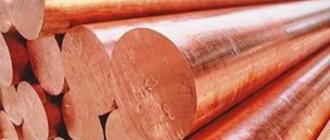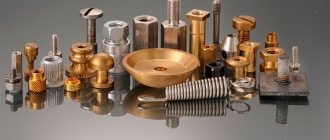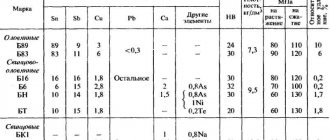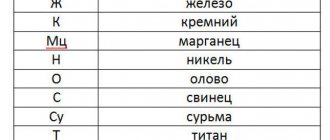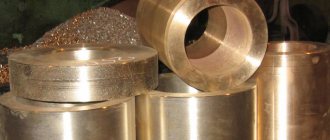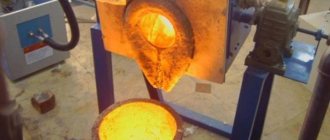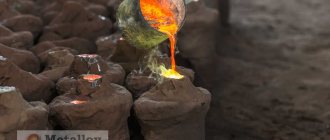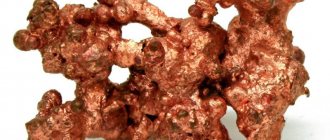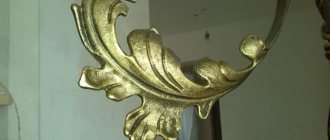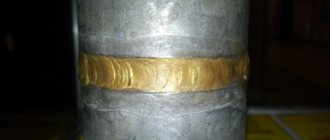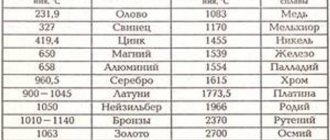An important event of the Bronze Age was the development of metallurgy, which resulted in the discovery of bronze. Some metals, especially tin, lead and copper, can be extracted from ores by heating rocks in a fire or blast furnace. A process known as smelting.
The discovery of bronze using existing metallurgical technologies revolutionized the production of weapons and works of art.
Bronze was originally used to make weapons. But soon metalworkers used this alloy to make art objects. One of the oldest and most common methods of making bronze sculptures is the lost wax process. In which hollow, unique sculptures are created in any form the artist chooses. Dancing Girl (c. 2500 BC) from Mohenjodaro in the Indus Valley, possibly the world's first bronze statue. Although she is in a standing position, she was named Dancing Girl. with an assumption about his profession. This is one of two bronze works of art found at Mohenjodaro. Which show more flexible features compared to other, more formal poses. The girl is naked, wearing several bracelets and a necklace, standing in a natural pose. She has her right hand on her hip and her left hand is holding some object that is resting on her thigh.
Dancing Girl (c. 2500 BC) : Bronze. 4 1/8" x 2". National Museum, New Delhi.
The Snetitsky culture arose at the beginning of the Central European Bronze Age (2300-1600 BC). The culture is distinguished by distinctive metal objects, including ingot torques, flat axles, flat triangular daggers, bracelets with spiral ends, disc and blade pins, and curling rings, which are common across a large area of Central Europe and beyond. An interesting mixed media object from this culture is the Nebra Sky Disc (c. 1600 BC), which consists of a blue-green patina inlaid with gold symbols. These symbols were usually interpreted as the sun or full moon, crescent moon and stars. Later, two golden arcs were added on the sides, indicating the angle between the solstices. The final addition was another arc at the bottom, surrounded by many strokes of uncertain meaning. Variously interpreted as a solar barge with many oars, as the Milky Way, or as a rainbow. The disc, probably made with a hammer, is an astronomical instrument as well as an object of religious significance.
Nebra Sky Disc (c. 1600 BC) : Bronze and gold.
Diameter 30 cm. Pergamon Museum, Berlin. Bronze "ore" can occur naturally. For example, where natural deposits of copper and tin occur together, but this is very rare. Historically, bronze could only be produced when trade allowed the exchange of copper and tin, metals or ores.
How is bronze formed?
Copper is produced from copper ore through a process known as smelting. This is heating the ore to a very high temperature and removing impurities. At this time, other alloy components can also be added to the molten copper, where they melt and combine with the molten copper. Nowadays this is done with extreme precision to ensure the consistency of the bronze. Because even small changes in the alloy "recipe" can result in very different physical, castability and aesthetic qualities.
Bibliography
- Encyclopedia of metal technology.
A reference book for all metallurgical tradesmen and artists. Directed by J. Bersh. A. Editorial Hartlebens, Vienna/Pest/Leipzig, sin año de publicación. - Bronze is an indispensable material of our time.
Instituto alemán del cobre (DKI), Düsseldorf, 2003. - T.L. Kinlin: Early metal in the Northern Alpine region: a study of the technological and cognitive aspects of early metallurgy using Early Bronze Age ax structures.
En:
Archaeological information.
27, 2004, pp. 187-194. - Newsletters i15 and i25 of the German Copper Institute (DKI), Düsseldorf, 2004.
- Casting from copper alloys.
Ernst Brunhuber, Schiele & Schön, Berlin, 1986, ISBN 3-7949-0444-3. - Ardoin, Sergio Javier, 2022, Restoring the Republic
, Editorial Board of the National University of La Plata (EDULP), National University of La Plata (UNLP) - Faculty of Fine Arts (FBA), ISBN 978-987-4127-64 -8.
How has bronze been used throughout history?
Bronze was developed around 3500 BC. ancient Sumerians in the Tigris-Euphrates River valley. Historians are unsure how the alloy was discovered, but believe bronze may have been first produced by accident. When stones rich in copper and tin were used to create fire rings.
Around 3000 BC bronze production spread to Persia. Where bronze objects such as jewelry, weapons and chariot parts were found. Bronze appeared in Egypt and China around 2000 BC. The earliest bronze castings were made from sand. And this method is sometimes still used, even for casting bells.
At first, copper-arsenic alloys were used, but not for long. One of the disadvantages of this alloy was that the arsenic fumes released during smelting killed metalworkers.
In the end, tin proved to be the ideal alloying agent for copper. The optimal ratio of tin to copper is from 10 to 20%. The melting point of bronze is 950⁰C, compared to 1084⁰C for pure copper.
Modern objects usually made of bronze
During the Bronze Age, bronze was widespread because it was the hardest metal alloy. Bronze artifacts dating to this time period include tools, arrowheads and other weapons, building materials, and art. As the use of iron became more widespread, fewer everyday objects were made from bronze. But its use to this day testifies to its durability and versatility. Today we use bronze in a variety of applications, some of which are described below.
References
- Archaeometallurgical Glossary
- Probably direct casting
using the original clay, a layer of wax to be replaced by cast bronze, and an external clay mold: this is a very complex technique in which the slightest mistake will ruin the piece. - What did the ancient inhabitants of Mesoamerica know about foundry?
- History of alloys - ININ
- “Stainless Steel and Copper: Which Metal is Best for Your Project? | J. N. Stills". J. N. Stills
. March 17, 2015. Archived from the original on November 8, 2018. Retrieved November 8, 2022. - Knapp, Brian. (1996) Copper, silver and gold. Reed Library, Australia
- Utility network Glosario
- ↑ a b c d e f g
Mario Gandara.
"Copper alloys". Jewelry Library
. Archived from the original on October 6, 2011. Retrieved October 1, 2011 - Bronze Age
- The first records of the use of cannons in Spain date back to the city of Seville in 1248
. - Japanese alloys
- Louis Frederick. "Cara Kane". Encyclopedia of Japan
(in English). Retrieved October 1, 2011 - "Society of Automotive Engineers SAE". Archived from the original on July 11, 2007. Retrieved June 1, 2007
- UNS: Uniform Numbering System: A metal classification standard used jointly by the American Society for Testing and Materials and the Society of Automotive Engineers (SAE).
- BB.AA. (2010). Artistic media and techniques
. Research Center Ramón Areces SA ISBN 978-84-9961-002-3.
Musical instruments
Bells and plates are often made of bronze; For bells, a special alloy called “bell metal” is used, which is made with a high tin content. Asian percussion instruments such as gongs and singing bowls are also made of bronze in a variety of compositions.
Bronze is also used in stringed instruments, including guitar, double bass and piano, to wrap steel and nylon strings. Bronze strings are used for lower pitched tones where they perform better than their high tensile steel counterparts.
Strings
Architectural bronze
Bronze has a variety of architectural uses, ranging from everyday objects such as letterboxes, furniture and stair railings, to more complex decorative elements such as decorative trim on doors and windows. Not only does this metal stand the test of time in these applications, but it is also available in a variety of colors, which also makes it desirable. Bronze, used in architecture, is an alloy consisting of 57 percent copper, 40 percent zinc and three percent lead.
Find Tin Ore
Once you find copper, you will also be close to tin. Tin is found near pools of water in the Black Forest biome and is a much darker color, sometimes with these bold black stripes running through the deposit. Dig it up.
Remember that neither tin nor copper can be transported through the portal, so you need to carry them yourself. Create a nearby storage base for your items. If you were feeling particularly efficient, you could set up a forge, smelter, and furnace near the forest biome. We'd say you can build a cart, but it requires bronze nails.
Commercial bronze
It's hard to find an industry that doesn't use bronze! We use bronze products every day without even thinking about it. Bearings, bushings, screws, valves and countless other parts are made from bronze because of its strength, durability, corrosion resistance and ductility. Wrought alloys are available in the form of sheets and plates, tubes or rods and are produced by rolling mills, extrusion mills or forging mills. In contrast, cast alloys are produced by sand casting, centrifugal casting and continuous casting. This is the most affordable type of bronze alloy.
Techniques for making bronze sculptures in Ancient Greece
The ancient Greeks and Romans have long made sculptures from bronze. Literally thousands of images of gods and heroes, victorious athletes, statesmen and philosophers filled temples and sanctuaries and stood in public places of large cities. For over a thousand years, Greek and Roman artists created hundreds of types of statues, whose influence on large-scale sculpture from Western Europe (and beyond) continues to this day.
Bronze mirror with stand in the form of a naked girl
In the third millennium BC, ancient foundries recognized through trial and error that bronze had distinct advantages over pure copper for making sculptures. Bronze is an alloy typically composed of 90 percent copper and 10 percent tin, and because it has a lower melting point than pure copper, it will remain liquid longer when filled into a mold. It also provides better casting than pure copper and has superior tensile strength. Although there were many sources of copper around the Mediterranean basin in Greek and Roman antiquity, the island of Cyprus, whose very name comes from the Greek word for copper, was one of the most important. Tin, on the other hand, was imported from regions such as southwest Turkey, Afghanistan and Cornwall, England.
Bronze Man and Centaur
The earliest large-scale Greek bronze statues had very simple forms, resulting from their manufacturing technique known as sphirelaton (literally "hammered"), in which parts of the statue were made separately from hammered sheets of metal and attached to one of them. the other with rivets. Often these metal sheets were decorated by applying bronze to wooden forms to create reliefs or carve designs using a technique called tracing.
Bronze Torso of Youth
By the Late Archaic period (ca. 500–480 BC), sfirelaton fell into disuse as a primary method, when lost wax casting became the primary method for making bronze sculptures. Bronze lost wax casting is done in three different ways: lost wax casting, direct lost wax casting and indirect lost wax casting. The first method, which is also the earliest and simplest, requires creating a model from hard wax. This model is surrounded by clay and then heated to remove the wax and harden it. Next, the mold is turned over and molten metal is poured into it. Once the metal has cooled, the smith opens the clay model to create an exact replica in bronze.
Since the physical properties of bronze prevent the casting of large solid pieces, the use of hard wax models limited the founder to casting very small figures. To solve this problem, the ancient Greeks used the hollow wax casting process to make large free-standing bronze statues.
Typically, a large sculpture was cast from several parts, such as the head, torso, arms and legs. In the direct hollow wax casting process, the sculptor first creates a clay core that is approximately the size and shape of the intended statue. Larger statues use reinforcement, usually made from iron rods, to stabilize the core. The clay core is then coated with wax and vents are added to facilitate the flow of molten metal and the escape of gases, ensuring an even casting.
The model is then completely coated with a rough outer layer of clay and then heated to remove all the wax, thereby creating a hollow matrix. The mold is reheated for a second, longer period of time to allow the clay to harden and burn off any remaining wax. The bronzer then pours molten metal into the mold until the entire die is filled. Once the bronze has cooled sufficiently, the mold opens and the bronze is ready for the finishing process.
With the indirect lost wax casting method, the original master model is not lost during the casting process. In this way, sections can be remade, a series of the same statue can be made, and large sculptures can be cast. Because of these advantages, most large-scale ancient Greek and Roman bronze statues were produced by the indirect method.
First, a model of the statue is made in the sculptor's preferred medium, usually clay. A clay or plaster mold is then made around the model to follow its shape. This mold consists of the minimum number of sections that can be removed without damaging the undercut modeling. After drying, the individual parts of the mold are removed, assembled and fastened.
Each segment of the mold is then coated with a thin layer of beeswax. After this wax has cooled, the cast is removed and the artist checks that all necessary details have been transferred from the master model. At this time, corrections and other details may be made to the wax model.
The bronzer then attaches a system of funnels, channels and vents to the wax model and covers the entire structure with one or more layers of clay. As with the direct method, the clay mold is heated and wax is poured. It is heated again to a higher temperature to fire the clay, and then heated again when pouring the molten metal. As this metal cools, the mold breaks away, revealing a cast bronze segment of the statue.
All protrusions remaining from the filler channels are cut off, and small defects are removed with abrasive. The separately cast parts are then joined together using metallurgical and mechanical means.
The skill of making these compounds in antiquity is one of the greatest technical achievements of Greek and Roman bronze working. In the finishing process, decorative details such as hair and other surface designs can be emphasized using cold chisel working. The ancient Greeks and Romans often added eyes inlaid with glass or stones, teeth and nails inlaid with silver, and lips and nipples inlaid with copper, all of which contributed to the amazingly realistic appearance of the bronze statue.
Since all but a few ancient bronze statues were lost or melted down to reuse the valuable metal, marble copies made during the Roman period provide our primary visual evidence of the masterpieces of famous Greek sculptors. Almost all of the marble statues in the Mary and Michael Jaharis Gallery at the Metropolitan Museum of Art are Roman copies of bronze statues created by Greek artists about 500 years earlier, in the fifth and fourth centuries BC.
external reference
- Wiktionary has definitions and other information about bronze
. - Wikimedia Commons has a media category Bronze
. - Bronze metallurgy in the South-Central Andes of Tiwanaku and San Pedro de Atacama
- Bronze casting process
- Flash animation of the investment casting process
- lost wax casting
- National Pollutant Inventory - U.S. Copper and Alloys Fact Sheet
- Foundry operating for over 125 years
- Bronze, 3000 years of tradition
- Traditional peasant foundry on the coast of Ecuador.
| authoritative control |
|
- Data: Q34095
- Multimedia: bronze
